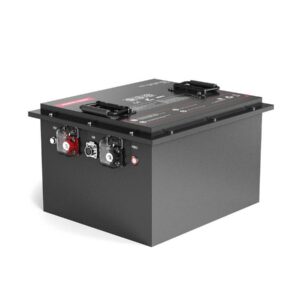
Can lithium batteries start a car?
Yes, certain lithium batteries—particularly lithium iron phosphate (LiFePO4) variants—can start cars effectively. While traditional lead-acid batteries dominate the automotive market, LiFePO4 offers superior energy density (2–3x lighter), faster discharge rates (400–600A cold cranking amps), and 10x longer cycle life (3,000+ cycles). However, compatibility with vehicle charging systems remains critical—LiFePO4 requires precise voltage regulation (≤14.5V) and may need a battery management system (BMS) to prevent overcharging. Brands like BYD have successfully integrated LiFePO4 starter batteries in 2M+ EVs, eliminating lead pollution risks.
How to Safely Dispose of and Recycle Car Batteries
What makes LiFePO4 viable for car starting?
LiFePO4 batteries deliver instant high-current bursts (500–800A) needed for engine ignition while maintaining stable voltage. Their low internal resistance prevents voltage sag during cold starts. Pro Tip: Always verify alternator compatibility—older vehicles with unregulated charging may exceed LiFePO4’s 14.6V upper limit.

Unlike standard lithium-ion, LiFePO4 chemistry resists thermal runaway, making it safer under hood temperatures. For example, BYD’s starter packs use integrated BMS to balance cells and synchronize with vehicle electronics. Transitionally, while lead-acid batteries struggle below -20°C, LiFePO4 retains 80% cranking power at -30°C. However, their flat discharge curve (3.2V/cell nominal) requires voltage converters if replacing 12V lead-acid systems directly.
Why aren’t all cars using lithium starter batteries?
Cost and charging system incompatibility are primary barriers. LiFePO4 packs cost 3–5x more than lead-acid equivalents. Additionally, 70% of ICE vehicles lack voltage regulation precise enough for lithium chemistries. Pro Tip: Retrofit kits often include DC-DC converters to buffer voltage spikes from older alternators.
Most automakers hesitate to redesign legacy 12V systems optimized for lead-acid. Yet, BYD’s approach in EVs demonstrates feasibility—their BMS coordinates between LiFePO4 starter batteries and traction packs, enabling automatic recharge from the main battery when needed. For conventional cars, aftermarket solutions require meticulous wiring: improper installation risks parasitic drains or communication errors with ECU/CAN bus networks.
| Parameter | Lead-Acid | LiFePO4 |
|---|---|---|
| Weight (12V 60Ah) | 18–22 kg | 5–7 kg |
| Cycle Life | 200–300 | 3,000+ |
| Cranking Current (-18°C) | 500A | 750A |
Battery Expert Insight
FAQs
Can I swap my lead-acid battery for LiFePO4 directly?
Only in vehicles with voltage-regulated charging systems (2010+ models). Older cars require DC-DC converters to cap charging at 14.6V.
Do lithium starter batteries work in extreme cold?
Yes—LiFePO4 maintains 80% capacity at -30°C vs. lead-acid’s 40%, but ensure BMS includes low-temp charging protection.
